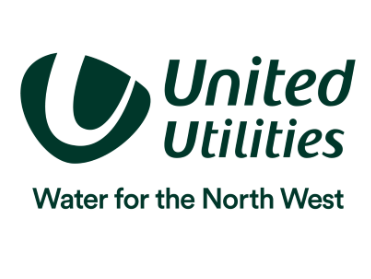The Environment Agency is looking for water companies’ serious pollution incidents to “trend towards zero” by 2020, according to its annual Environmental Performance Assessment for all nine of England’s water and sewerage companies.
The Agency introduced the Environmental Performance Assessment (EPA) in 2011 as a tool for comparing performance between water companies and across years, using 6 indicators to provide a meaningful and comparable overview of performance across the 9 water companies.
The indicators measure performance associated with:
- reducing pollution incidents and increasing company reporting of incidents
- complying with discharge permits
- managing the use and disposal of sewage sludge
- delivering environmental improvement schemes
Key performance messages for the sector
This is the first year (since the EPA was introduced in 2011) 3 companies have achieved 'industry leading' status (the 4* assessment is the highest possible rating), with 5 other companies rated above average. Leading companies are Severn Trent Water, United Utilities and Wessex Water..
One company, South West Water, is rated as poor performing and has deteriorated from a below average rating in 2014.
Key improvements compared to previous years include:
- a large reduction in the total pollution incidents (category 1 to 3) for 2015 (1,742, compared to 2,358 in 2014), similar to the lowest levels achieved in 2008
- a record low of 4 category 1 serious pollution incidents in 2014 was again achieved in 2015. Only 3 category 1 serious pollution incidents were associated with sewerage, which is another record low
- a further small reduction in the number of serious pollution incidents to 59 compared to 61 in 2014 and 88 in 2013
- the highest ever level of self-reporting of pollution incidents at 69%, up from 66% in 2014
The EPA indicators and their associated metrics were set for the duration of the Asset Management Period (AMP) which ran from April 2010 to March 2015. In future the EA will use revised thresholds and definitions for the EPA which will apply to reporting 2016 data and future reporting up to 2021, as well as some new indicators covering water resources and flooding.
The Agency’s expectations in a number of areas including operational performance include:
- reduce category 1 and 2 (the most serious) pollution incidents, trending towards zero by 2020
- trend to minimise all pollution incidents (category 1 to 3) by 2020 with at least a third reduction compared to 2012 figures
- achieve high levels of self-reporting of pollution incidents with at least 75% of incidents self-reported by 2020
- ensure a plan is in place to achieve 100% compliance for all licences and permits
- manage sewage sludge treatment and re-use in a way that does not cause pollution
- plan environmental improvement schemes (e.g. Asset Management Plan, Water Resource Management Plans) well and deliver them as planned
In developing their business plans for the period 2015 to 2020 the majority of the water companies translated these expectations into Performance Commitments and associated Outcome Delivery Incentives.
Serious pollution incidents see "welcome improvement"
The report says the last 2 years (2014 and 2015) have seen a welcome improvement following the disappointing performance in 2013 when the sector was the cause of 88 serious pollution incidents. In 2015, the number of serious pollution incidents (categories 1 and 2) decreased slightly to 59, compared to 61 in 2014. The figure is similar to levels seen in 2008 to 2010 and the expectation is for further reductions.
Following the increase in serious incidents in 2013 the Agency asked each company to produce an action plan to understand the increase and reverse the rise. There was no common root cause identified for the increase in 2013, with causes varying between companies. Key factors which contributed were inadequate monitoring and management and shortcomings in risk assessment, operational practice and staff culture.
Total pollution incidents in 2015 were back to the lowest levels achieved in 2008, with 1,742 incidents (category 1, 2 and 3), a large reduction from 2,358 in 2014.
The total number of water quality pollution incidents from sewerage and water service assets (categories 1, 2 and 3) rose steadily between 2008 and 2012. However, some of this is due to better reporting by the companies.
2015 saw the highest ever level of self-reporting of pollution incidents by the sector at 69%, up from 66% in 2014. The range for individual companies is variable from 82% down to just 48%, with some companies reducing self-reporting. The EA has told all the companies that we expect their self-reporting to reach 75% by 2020.
Commenting on the reduction, the Agency said:
“Within the overall large reduction, performance varied between companies. We are interested to understand how some companies achieved large reductions, whilst others increased. We want to see further reductions in incidents and encourage the industry to share best practice.”
Flood and coastal risk management
This year the report has been extended to include a narrative on flooding matters and performance by the water sector. Between April 2015 and March 2016, the water and sewerage companies invested £102 million on reducing the risk of sewer flooding to properties and also invested a further £53 million in maintaining the public sewer system to prevent blockages and flooding. In addition to major schemes, the companies have invested a further £12 million in property-level protection and mitigation measures to reduce the likelihood of customers' homes experiencing sewer flooding.
The report concludes that the water companies “have made welcome improvements and thankfully, the industry no longer has the level of adverse impact on the environment that it had in the past. It recognises there is further work to do to meet the requirements of legislation and public expectation.”
Severn Trent delivers its second 4* performance in the last three years
Commenting separately on the report, Liv Garfield, Chief Executive of Severn Trent, said:
“This is great news and a real endorsement of all the hard work the team has put in over the past 12 months and, as this is our second 4* performance in the last three years, before that.”
“We know that our customers want us to be great custodians of the environment which is why we put such emphasis on our performance in that area. But the fact remains that we can always do better – we constantly strive to be best in class and I’ll be challenging everyone to continually improve our performance in the years to come.”
Liv Garfield attributed Severn Trent’s reduction in serious pollution incidents to continued investment in high risk assets, improving operational processes and investigating third party sources of pollution entering the network. The water company’s highest risk of pollution continues to be sewer blockages, resulting in sewage entering watercourses. Severn Trent is now in the process of installing over 500 monitors at high risk locations to detect the formation of blockages, in order to proactively resolve the issue before a potential incident happens
Click here to download the full report.

 Balfour Beatty, the UK’s largest construction and infrastructure provider, has delivered exceptional environmental results on the Thames Estuary Asset Management 2100 (TEAM2100) framework, one of the nation’s most ambitious flood defence initiatives.
Balfour Beatty, the UK’s largest construction and infrastructure provider, has delivered exceptional environmental results on the Thames Estuary Asset Management 2100 (TEAM2100) framework, one of the nation’s most ambitious flood defence initiatives. The Silvertown Tunnel’s pumping system is reducing the risk of flooding, delays and costly maintenance, while supporting the long-term resilience of London’s transport network, says Ian Ireland, large pumping projects programme manager, Xylem UK.
The Silvertown Tunnel’s pumping system is reducing the risk of flooding, delays and costly maintenance, while supporting the long-term resilience of London’s transport network, says Ian Ireland, large pumping projects programme manager, Xylem UK.

 Hear how United Utilities is accelerating its investment to reduce spills from storm overflows across the Northwest.
Hear how United Utilities is accelerating its investment to reduce spills from storm overflows across the Northwest. What is to be done about the UK’s failing utilities? Listen to Professor Dieter Helm explore the options to tackle the UK’s failing utilities – Thames Water, the Royal Mail and Network Rail in particular.
What is to be done about the UK’s failing utilities? Listen to Professor Dieter Helm explore the options to tackle the UK’s failing utilities – Thames Water, the Royal Mail and Network Rail in particular.